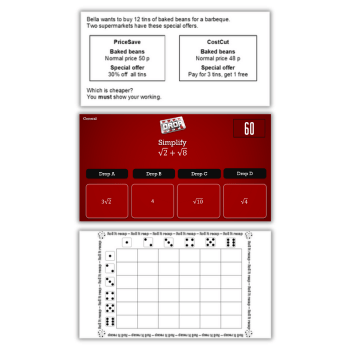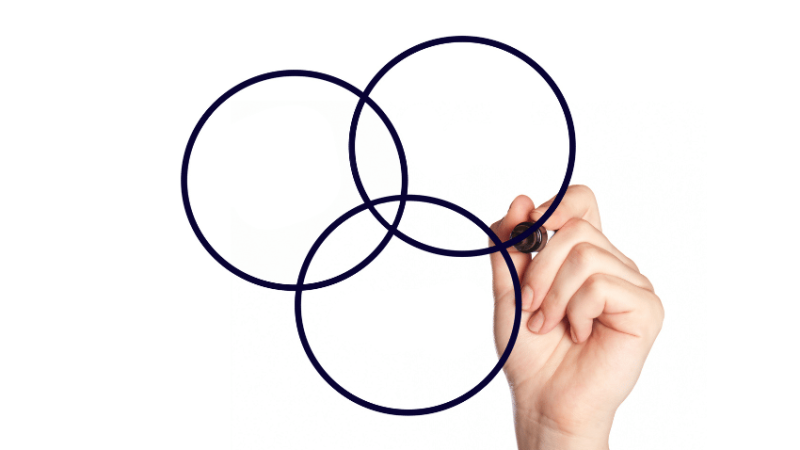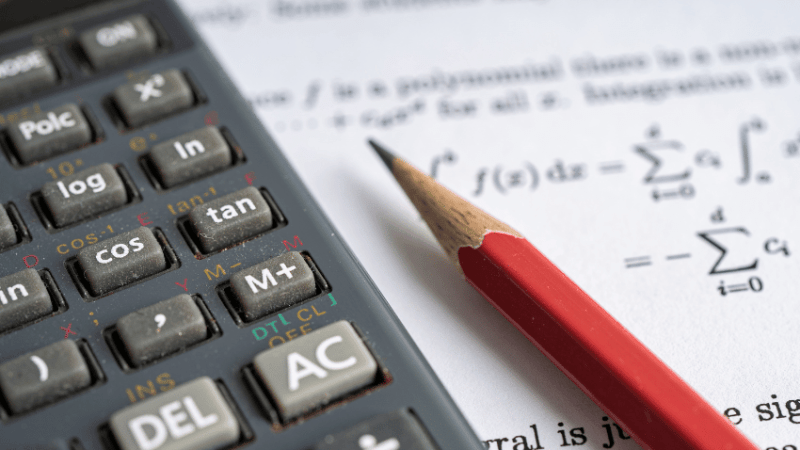What’s wrong with maths GCSE? Addressing fundamental problems at the heart of the new exams

Last year’s new exams had some positive aspects, says Charlie Stripp, but there are still a couple of key issues we need to look at

Let’s start at the beginning: what do we want from the maths GCSE?
I think these are its intended purposes:
- To identify those who have not reached the minimum national expectation of maths competence at age 16. On the new maths GCSE this is considered to be a grade 4.
- To prepare as many students as possible to study maths to a higher level.
- To identify which students are ready to study maths to a higher level, and which maths qualification pathway will best support their aspirations.
- All 16 year-olds achieving below a grade 4 follow a suitable post-16 programme which supports them towards achieving the minimum national expectation of maths competence.
- All 16 year olds who have achieved at least a grade 4 continue with maths post-16, choosing the most appropriate pathway to support their aspirations.
- Educational institutions and employers understand the level of maths each young person has achieved by age 16 and what that means for progression post-16.
So, did the new maths GCSE meet these purposes and intended outcomes? Well, yes and no. On the plus side, the content is strong, and can provide a much better preparation for further study than the old GCSE.
Also, the new grade 9 provides a greater challenge than the old A* and can identify the very highest attainers.
However, as for the old GCSE, the grade 4 threshold was based not on competence but on how well students performed against their peers, and the grade thresholds were far lower than for the old GCSE:
Maths GCSE grade thresholds
| Year | Grade threshold to achieve a grade C/4 | Grade threshold to achieve a grade A/7 |
|---|---|---|
| 2016 A*-G GCSE |
Around 35% (Grade C, Higher tier) Around 67% (Grade C, Foundation tier) |
Around 70% (Grade A, Higher tier only) |
| 2017 9-1 GCSE |
Around 20% (Grade 4, Higher tier) A little over 50% (Grade 4, Foundation tier) |
Around 50% (Grade 7, Higher tier only) |
These low thresholds meant that many students were only able to demonstrate what they couldn’t do, rather than showing what they were capable of.
Widespread anecdotal evidence suggests that negative exam experiences have deterred students from studying maths post-16, even though their grades were intended to indicate that they were well-prepared to do so.
What could we do better?
This year, the proportions of students achieving grade 4 or above and grade 7 or above were pegged to the proportions achieving a grade C or above or grade A or above in 2016 (roughly 70% and 20% respectively).
In the first year of the new maths GCSE this made sense – it would be unfair to have a sudden change in numbers achieving crucial grades. However, in future, I think it is vital that the grade 4 should represent a consistent measure of maths competence.
The new national reference test (NRT) should make this possible. The NRT assesses how national performance changes over time. It works by having a large sample of students take exactly the same test each year, shortly before they take their GCSEs.
A fixed score on the NRT can therefore determine the proportion of students awarded a grade 4 each year. This would mean that improvements in national attainment would result in more students achieving a grade 4 or above.
Maths GCSE has two tiers of entry: Foundation and Higher. For the new maths GCSE this year, the Foundation tier targeted grades 1-5 and the Higher tier grades 4-9.
Examinations should enable students to demonstrate what they have learned, so a mark of around 70% on the Foundation tier seems about right for a grade 4.
Students expected to achieve a grade 4, but who are thought to be unlikely to achieve a higher grade, should not be entered for the Higher tier. This is largely what happened this year, as the following table demonstrates:
Proportions of students taking the Higher and Foundation Tiers in GCSE Maths
Trending
| 2017 | 2016 | |
|---|---|---|
| Higher tier | 53% | 76% |
| Foundation tier | 47% | 24% |
The trouble with tiers
This year’s threshold of under 20% for a grade 4 on the Higher tier is very damaging. It reinforces the view that maths is very hard, and risks encouraging schools to enter students inappropriately in future.
GCSE maths performance is high stakes for both schools and students, and schools can be tempted to enter students targeting grades 4 and 5 for the Higher tier if they feel such students have a better chance of scraping together the relatively low number of marks needed to achieve these grades in the Higher tier exams than of achieving the far higher marks required on the Foundation tier exams.
This encourages ‘teaching to the test’, rather than ensuring students have a strong grasp of the fundamental maths they will need for life and work.
The tiering structure should be changed to ensure it is not in schools’ interests to enter students for the Higher tier unless they have a realistic chance of achieving at least a grade 6.
The current tiering involves students for each tier taking three papers of equal demand aimed at that tier, with some common questions used in both tiers to aid comparability where the tier grades overlap.
A possible solution could be based around students taking two out of three papers, perhaps with Paper 1 aimed at grades 1-3, Paper 2 at grades 4 and 5, and paper 3 at grades 6-9.
Foundation tier students would take papers 1 and 2; Higher tier students would take papers 2 and 3.
This would enable the large majority of students to score well on at least one paper and would remove any reason for ‘tactical’ entry, as the key grades 4 and 5 would be awarded based mainly on performance on paper 2, which would be taken by all.
Implications for the future
England lags behind most other developed countries in participation in maths education post-16 and evidence suggests this reduces both the earnings of individuals and national economic performance.
I think this low participation is at least partly down to national attitudes towards maths – that it is difficult and that only the lucky few can succeed in it. We are beginning to overcome that view and there is plenty of positive work going on, particularly through the NCETM, the Maths Hubs and the FMSP, to show young people that by working hard at maths they can succeed.
Over the coming years, it is the intention that participation in maths post-16 will increase dramatically. That will require huge increases in Core Maths, and continued increases in AS and A level Maths/Further Maths.
The content of the new GCSE maths can prepare students well, but if more who achieve grades 4 and above are to choose maths post-16, they will need to feel more positive about their GCSE maths experience.
To help that to happen, the current examination and tiering structure should be changed, so that the exams enable more students to show what they can do, rather than highlighting what they can’t.
Charlie Stripp is chief executive of MEI (mei.org.uk) and director of the NCETM (ncetm.org.uk). Browse our list of GCSE maths games.











